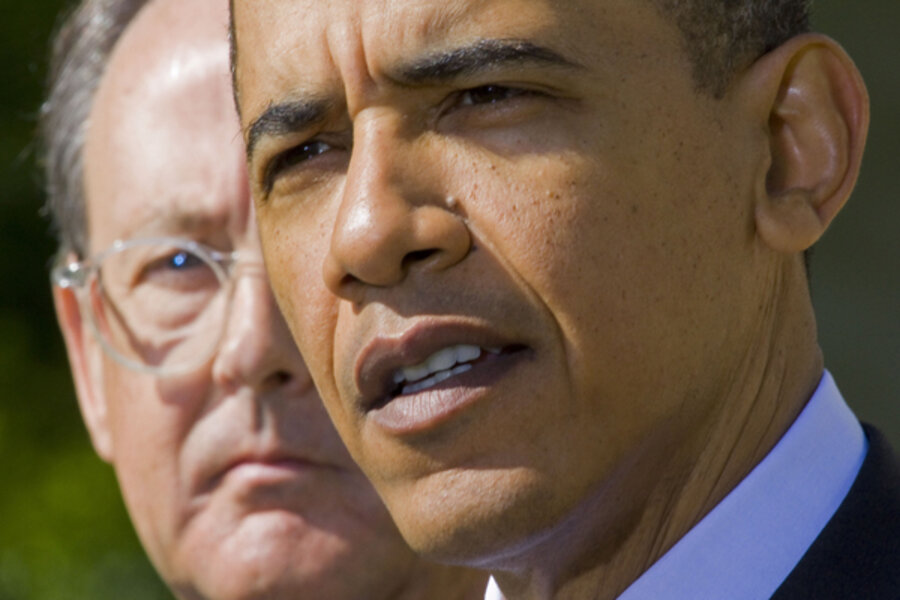Is there such a thing as an unsustainable level of debt?
Loading...
My short answer is: “no.” Debt is a stock concept, not a flow one. To determine whether something is “sustainable” or not (whether it be the government’s fiscal condition, a family’s personal finances, environmental quality, one’s physical health, or even personal relationships) requires a look at the dynamics of the situation, not just a snapshot.
I mention this because there’s been a lot of buzz among fiscal policy economists over the past couple days, ever since the President’s fiscal commission discussed the idea of setting a specific level of gross federal debt to GDP as a policy goal. Experts from all sides attacked this notion immediately, focusing on the “gross” part. They emphasize that economically, it’s really net debt, or debt held by the public (investors whether American or foreign), that matters. Jim Horney of the (left-leaning) Center on Budget and Policy Priorities explains this very well, and Andrew Biggs of the (right-leaning) American Enterprise Institute agrees.
My objection is on the emphasis of a particular level of debt–whether gross or net, actually–as some sort of magical number that would trigger a particular set of bad economic outcomes if we were to reach it. Here, I think I agree with Paul Krugman’s sentiment when he wraps up his complaint with (my emphasis added):
So what’s happening is that the idea that Really Bad Things happen when [gross] debt crosses 90 percent of GDP is being treated as a solid fact, when it’s nothing of the sort. And if the Obama commission feeds that false perception, right there it’s doing a lot of harm.
But… I agree with Paul’s sentiment not because I think the debt (whether gross or net) is nothing to worry about, but because we should worry about it–not for the particular level it’s at right now and not even for any particular level it may reach by some date in the future, but for the whole dynamic path we see it taking from here forward. In other words, roll the video; don’t just study the photo.
What makes the fiscal outlook unsustainable is not that there exists a debt (which is good thing to be able to carry by the way) and not even that the debt will be larger in the future (which also can be a good thing if it allows us to grow our income by even more in the future). What makes it unsustainable is that the moving picture of the debt shows it growing faster than our economy (our capacity to pay the costs of carrying that debt). And if you look around at the scenery in this video, you realize that there’s nothing yet visible on the stage or in the scene that will do anything to change that scary course we’re on.
I think it’s impossible to label any particular level of gross OR net debt to GDP as the “breaking point” for our economy. It’s easier to point to a particularly high particular level by a particular time–such as net debt reaching 100% of GDP within the next ten years–as “well, yes, that’s certainly sufficiently unsustainable.” I have said something like that often, but even then, not because debt (a stock) equaling 100% of GDP (a flow) means anything. Such a level of debt would be unsustainable for a number of factors, all of which are “moving” pieces that aren’t moving in the right directions. Our federal spending commitments via the entitlement programs are only increasing. Our investments in things that would grow the economy over the long term and preserve our resources for the long term seem to be shrinking. Our revenue base is at best stagnating–certainly not keeping up with our needs. And our indebtedness is increasingly to foreign investors rather than to other fellow Americans.
These are all the moving pieces that make our fiscal situation unsustainable, and to point to a particular measure of debt as telling the story sells the story short and perpetuates the propaganda that fiscal hawks are just a bunch of “fearmongerers” full of Chicken Little stories that are just a bunch of bull. The story of fiscal unsustainability is not a bunch of bull. You just need to watch the video to understand it.
Add/view comments on this post.
------------------------------
The Christian Science Monitor has assembled a diverse group of the best economy-related bloggers out there. Our guest bloggers are not employed or directed by the Monitor and the views expressed are the bloggers' own, as is responsibility for the content of their blogs. To contact us about a blogger, click here. To add or view a comment on a guest blog, please go to the blogger's own site by clicking on the link above.





